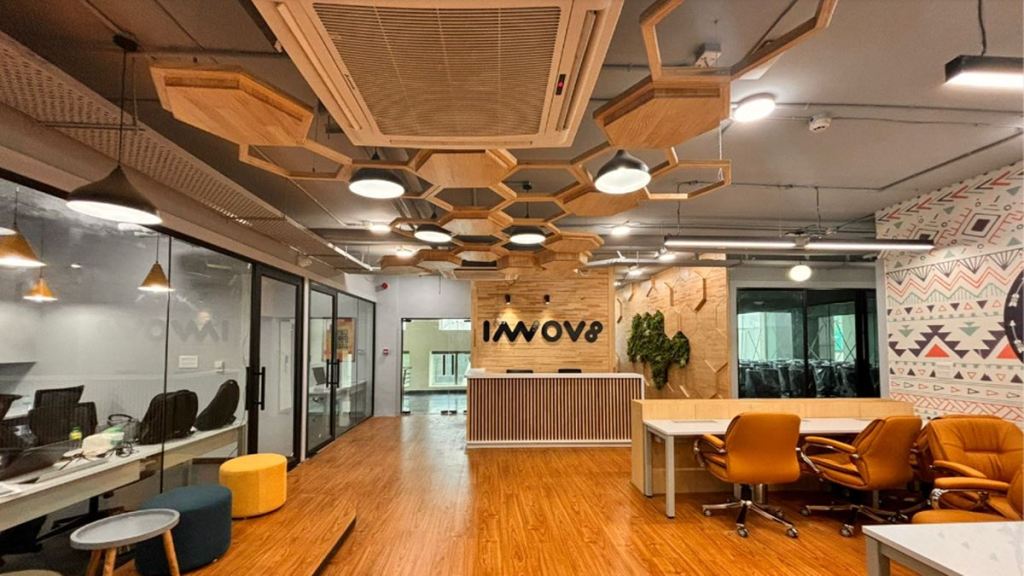A few years back we used to view our home and office through different lenses. Home is where the heart was, and offices were formal spaces where we worked to earn a living. The distinction was clear and without any ambiguity.
Typically, homes were designed with a warm palette, ample sunshine, and an unmistakable cultural bias, filled with memorabilia and artwork to create unique niches that reflect the homeowner’s personality.
Workplaces, on the other hand, were functional, formal and prosaic because the notion of bright colors, artworks and quirky designs were perceived as a distraction. The employees worked as a monolithic entity and not as a vibrant mix of culture and personalities. The design elements in such workplaces were repetitive, predictable, and in absence of a better word, boring.
The dawn of remote working
Then, without notice, the world was struck by a pandemic, and everything changed. Post Covid-19, a shift in approach and mindset altered the work dynamic forever. People realized there is more to life than work. The balance between work and life became more important than ever. The work from home culture which started as the only option during pandemic established itself as the new viable work model. The struggle to bring back employees back to office became a major concern among corporates as the pandemic receded.
By the beginning of 2023 we were out of the pandemic’s shadow. Hybrid work, which essentially was a mix of remote work and office work, had already gained popularity. The flexibility in work timing was refreshing with more focus on productivity and less on attendance. It was possible to achieve the same results even when we treat work as a friend to hang out with. Unpleasant work and toxic managers were not tolerated anymore.
Also Read: 5 mistakes to avoid for maximizing mutual fund returns
How do we bring them back to office?
With the rising trends, the real issue of bringing employees back to the office remained a problem for employers. The only way to address it was making the office an experiential stay and not a business-as-usual experience. The phenomena of “office peacocking” started from this ask. Slowly but steadily, all corporates realised that to attract talent, build culture, and bring the workforce back to office, we needed to shed our formality and embrace the myriad colours of a peacock. The flex office phenomena happening in parallel became a reference point for what the new office should aspire for.
A new design language started evolving faster than we could imagine. Suddenly offices had wooden flooring, rugs, and sofas. Artwork and decorative light fixtures adorned offices, with the sole objective to attract employees. The cubicles gave way to activity-based workplaces, meeting tables start resembling dining tables and the reception became the arrival foyer. Designers were blurring the lines between the office and the home with flair and unbridled excitement. The office can now be designed as a hangout, coffee shop or a pub with no questions asked. Hospitality design aesthetics started influencing office design in a major way.
What does the future hold?
This office peacocking phenomenon today is driven by the management as an essential strategy to reconnect with employees and make culture count. We know that great companies are not built on online meetings. Only when humans connect and interact with each other in a physical space, bonds are created, culture is celebrated and passion is shared. The employer has realised that productivity is linked to the employee experience. Just like a peacock we need to stand out, have a distinct voice, strut our stuff, and bring joy to our employees.
In retrospect, the curse of the pandemic had been a boon for the employees. It challenged us to question the way we were working and showed us a path where we can achieve greater heights without the weight of formality and toxic hierarchy. We are now working in a space which is welcoming, hospitable, and curated to elevate our physical and mental well-being. The new office is diverse, inclusive, and breaking barriers in ways that will be apparent with time. As we celebrate the office peacocking trend, it is important to understand that invisible threads tie humans with the work spaces they occupy, and maintaining the right balance is the key to a happy Monday.
(By Arnab Ghosh, Managing Director, Corporate Fitouts (Project Management), Colliers India)
Disclaimer: Views expressed are personal and do not reflect the official position or policy of FinancialExpress.com. Reproducing this content without permission is prohibited.

